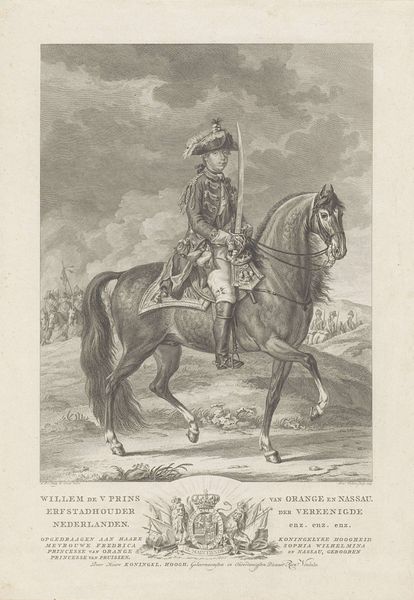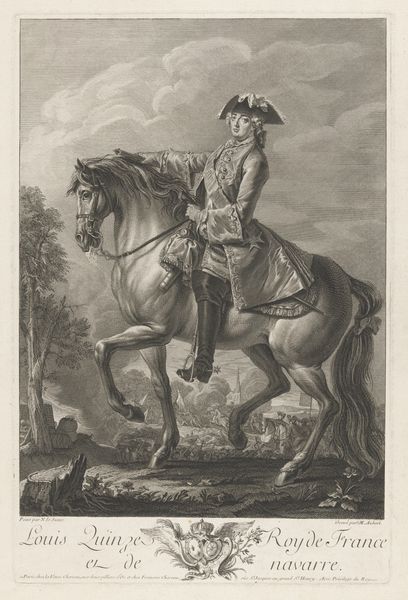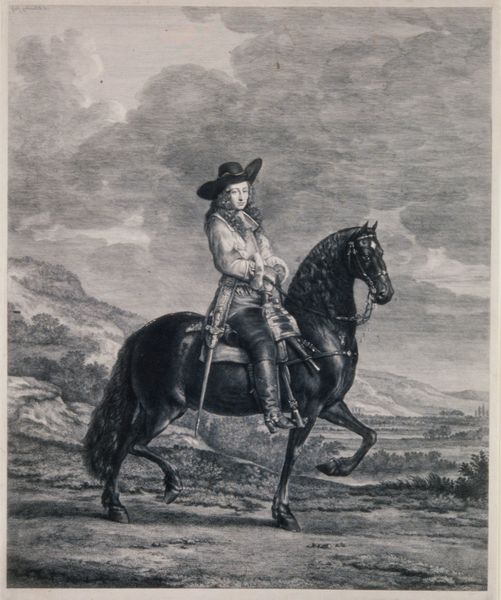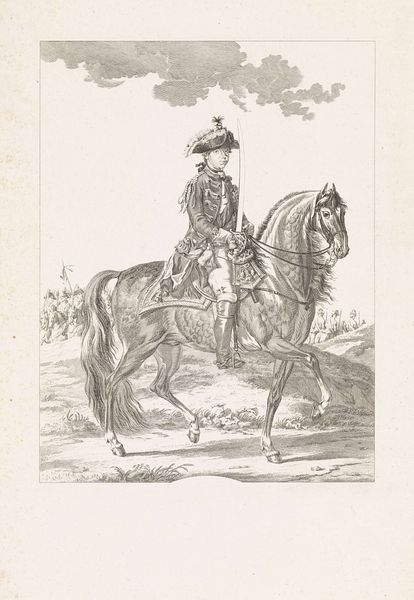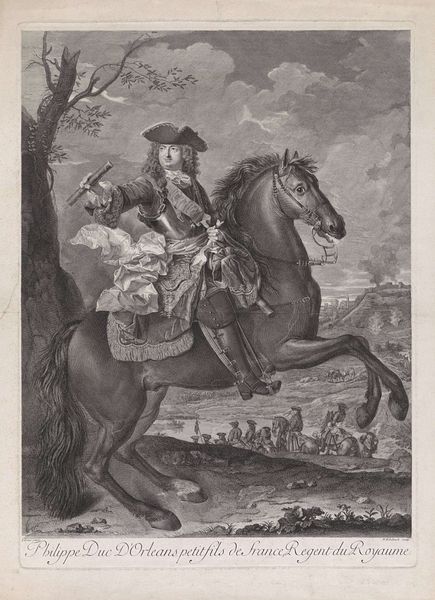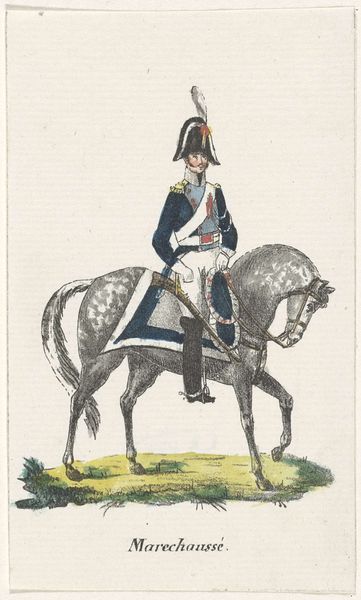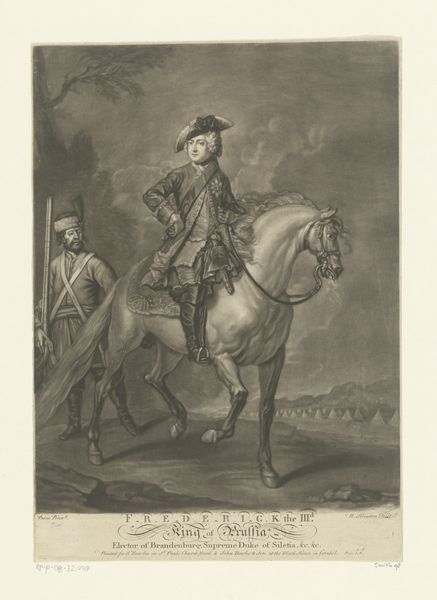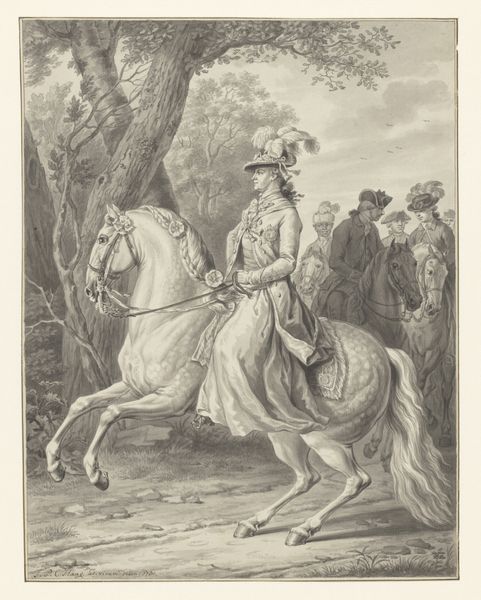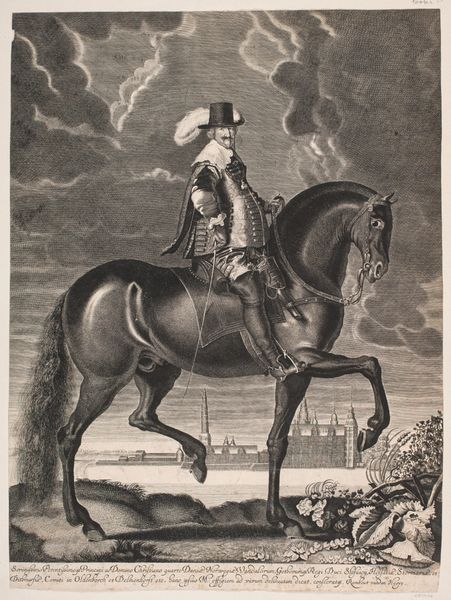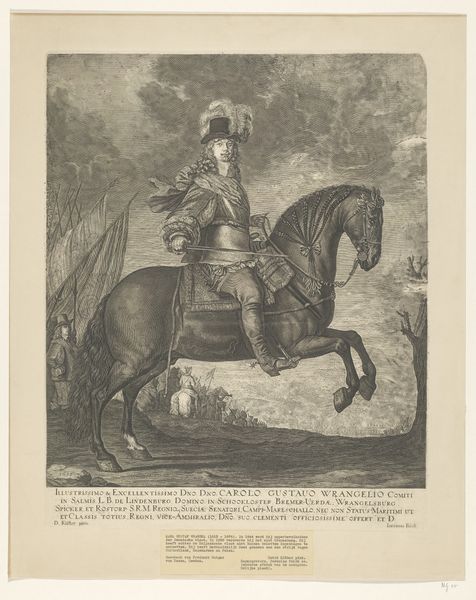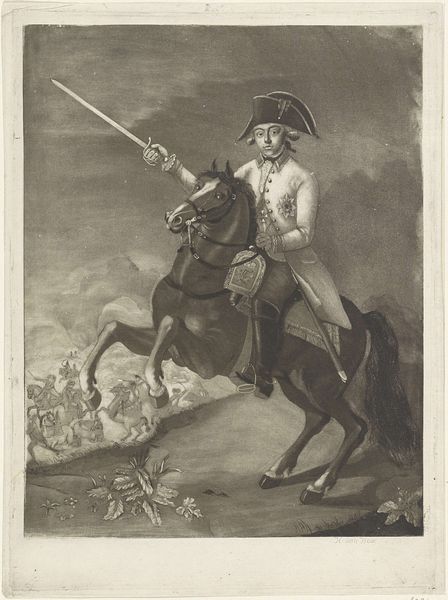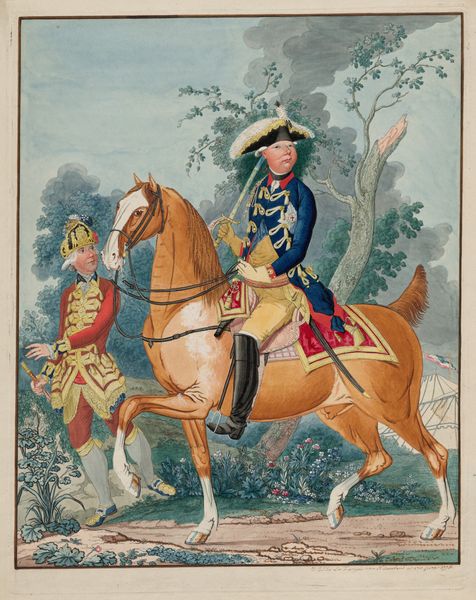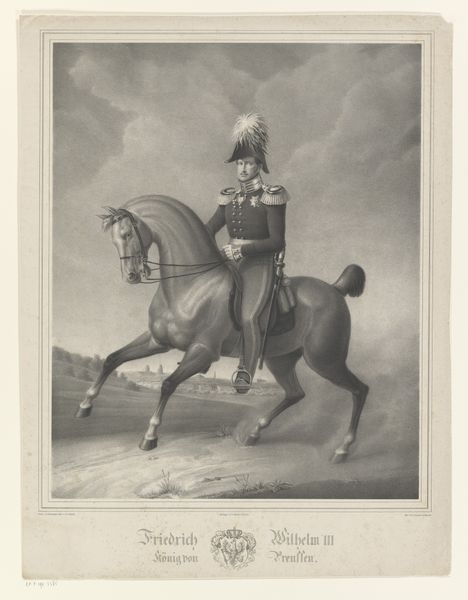
Dimensions: height 322 mm, width 220 mm
Copyright: Rijks Museum: Open Domain
Curator: This engraving from 1780 by Tethart Philip Christian Haag, currently held in the Rijksmuseum, presents Willem V, Prince of Orange-Nassau, on horseback. Editor: It strikes me as exceptionally stiff. The prince looks rather uncomfortable, and the horse seems frozen in place rather than posed in a dynamic way. Curator: Let’s consider Haag’s practice and the expectations of his patrons. As a portraitist, his market was largely defined by the aristocracy who wished to project an image of authority, status, and strength. He had to meet these expectations within the limited materials available. Editor: I’m more interested in the intrinsic forms. Observe how the composition leads the eye upward, tracing the diagonal of the sword and the feathered hat, towards the prince’s face. The engraver meticulously renders details such as the intricate braiding on his uniform and the musculature of the horse. There is clearly a high level of mastery displayed in the details. Curator: And yet, the image's formality serves the purpose of idealizing and memorializing Prince William. This wasn't merely a study of a man on a horse but a symbolic assertion of power during a tumultuous period. An engraving such as this was more easily distributed than an oil on canvas, allowing for broader access. Editor: True, the context is significant, but look at how the light and shadow play across the horse's coat. There’s almost a sculptural quality to the animal's form. The engraver uses hatching and cross-hatching to build volume and create tonal depth, all the marks lead you to an image, a final product. Curator: It’s tempting to see this merely as an exercise in skill but, if we consider Haag's social role as an artisan serving a wealthy clientele, his choices were inherently shaped by power structures. We must reflect that consumption, and material conditions were crucial to producing an image for display of prestige and wealth. Editor: Perhaps, but without his expert technical abilities there is nothing of the political considerations you have described. We may learn about both politics and artistic processes to experience it fully. Curator: Indeed, it serves as a reminder that all art is embedded within networks of materials and markets, artists and consumers. Editor: Agreed. It invites us to look beyond its representative qualities and explore the nuanced relationships between the formal elements and the story that it portrays.
Comments
No comments
Be the first to comment and join the conversation on the ultimate creative platform.
